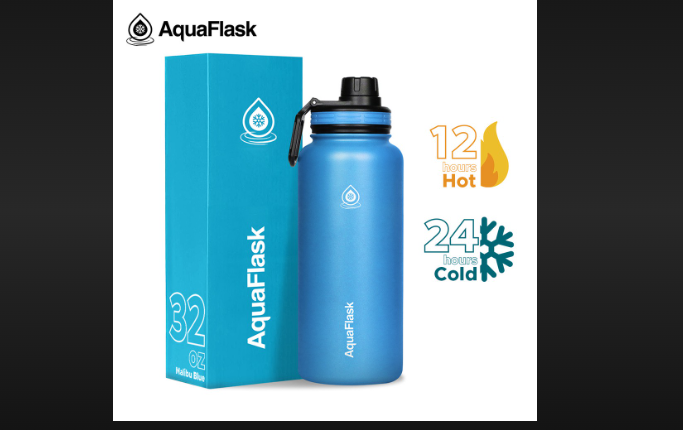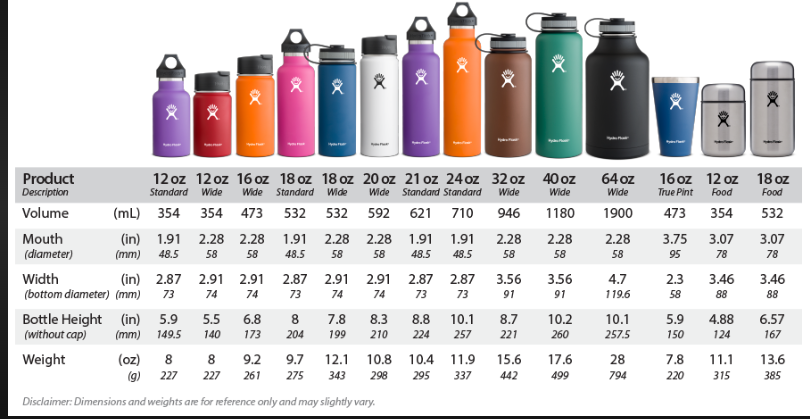Converting 32oz to mL: Understanding Water Measurements
When it comes to staying hydrated, knowing the right measurements is key. In a world where fluid intake is crucial for overall health, the question of converting ounces to milliliters (mL) frequently arises. If you've ever wondered about the conversion from 32 ounces (oz) to milliliters, this article will provide a clear understanding of the process and its importance for maintaining your body's water balance.

AquaFlask
1. Fluid Measurements: Ounces and Milliliters
Fluid measurements are used globally, but different regions use different units.
The United States primarily employs ounces (oz), while milliliters (mL) are commonly used in countries following the metric system.
Understanding the relationship between these units is essential, especially for accurate fluid intake.
2. 32 Ounces to Milliliters Conversion
To convert 32 ounces to milliliters, you need to know the conversion factor between the two units. The conversion factor is approximately 29.5735, as 1 ounce is roughly equal to 29.5735 milliliters. Applying this factor to 32 ounces yields:
32 oz * 29.5735 mL/oz ≈ 946.3536 mL
Hence, 32 ounces is approximately equivalent to 946.35 milliliters.
3. Importance of Staying Hydrated
Water is essential for maintaining various bodily functions, including regulating temperature, supporting digestion, and transporting nutrients.
Proper hydration helps prevent dehydration, which can lead to issues such as headaches, fatigue, and impaired cognitive function. Adequate fluid intake varies based on factors like age, activity level, and climate, making accurate measurements crucial.
4. Hydration Guidelines
Health authorities often recommend different daily water intake guidelines.
The National Academies of Sciences, Engineering, and Medicine in the United States suggests that men should aim for about 3.7 liters (or about 125 ounces) of total water intake per day, while women should aim for about 2.7 liters (or about 91 ounces) from all beverages and foods.
5. Convenience of Different Measurements
While ounces and milliliters are both used to measure fluid volume, they have distinct advantages.
Ounces are commonly used in the United States and may be more familiar to those accustomed to that measurement.
On the other hand, milliliters are used in most other parts of the world and are a fundamental unit in the metric system, providing easy conversions between different metric units.
6. Importance in Cooking and Baking
Accurate fluid measurements are crucial not only for hydration but also for cooking and baking.
Many recipes provide ingredient quantities in ounces, milliliters, or even cups.
Converting fluid measurements ensures that your culinary endeavors turn out as intended, whether you're making a refreshing beverage or a delicious homemade soup.
7. Health Tracking and Fitness
For individuals focused on health and fitness, tracking fluid intake is essential.
Many fitness apps and trackers allow you to input your daily water consumption.
Knowing how much water is in your 32-ounce water bottle can help you stay on top of your hydration goals throughout the day.
8. Travel Considerations
Traveling internationally exposes you to different fluid measurement systems.
Familiarizing yourself with conversions, such as from ounces to milliliters, can help you navigate unfamiliar territory and maintain your hydration routine.
9. Customary vs. Metric: A Global Perspective
The distinction between ounces and milliliters highlights the global diversity in measurement systems.
Countries that predominantly use the metric system, such as most of Europe and Asia, find milliliters to be a more intuitive and practical unit for fluid measurement.
Understanding these differences can foster cultural awareness and ease communication.

Information of all product
In a world where fluid intake plays a vital role in overall health and well-being, understanding fluid measurements like ounces and milliliters is essential. The conversion from 32 ounces to milliliters, approximately 946.35 mL, demonstrates the importance of accurate measurements for proper hydration, culinary endeavors, health tracking, and international travel. As you strive to maintain your body's water balance, having a grasp of fluid conversions empowers you to make informed decisions about your daily fluid intake and contribute to your overall health and vitality.